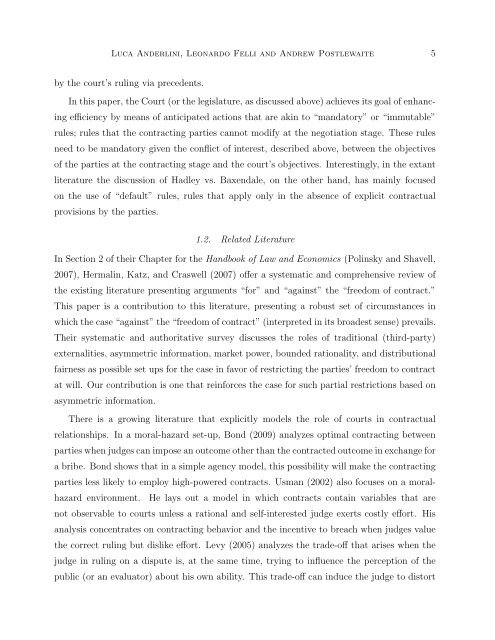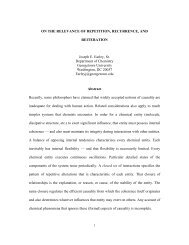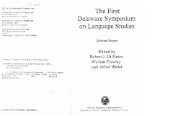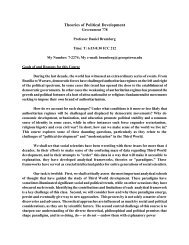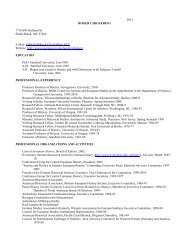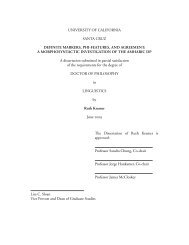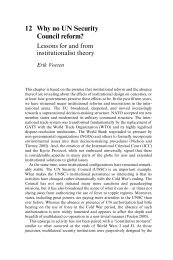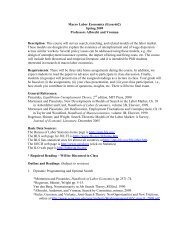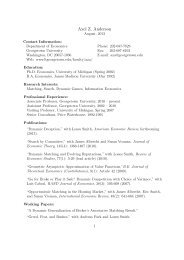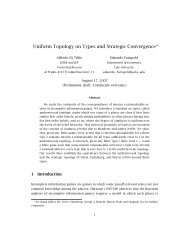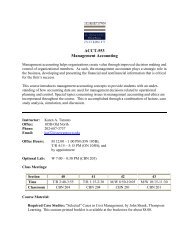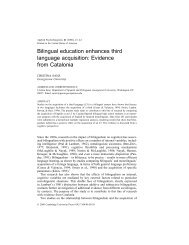PDF File - Georgetown University
PDF File - Georgetown University
PDF File - Georgetown University
You also want an ePaper? Increase the reach of your titles
YUMPU automatically turns print PDFs into web optimized ePapers that Google loves.
Luca Anderlini, Leonardo Felli and Andrew Postlewaite 5by the court’s ruling via precedents.In this paper, the Court (or the legislature, as discussed above) achieves its goal of enhancingefficiency by means of anticipated actions that are akin to “mandatory” or “immutable”rules; rules that the contracting parties cannot modify at the negotiation stage. These rulesneed to be mandatory given the conflict of interest, described above, between the objectivesof the parties at the contracting stage and the court’s objectives. Interestingly, in the extantliterature the discussion of Hadley vs. Baxendale, on the other hand, has mainly focusedon the use of “default” rules, rules that apply only in the absence of explicit contractualprovisions by the parties.1.2. Related LiteratureIn Section 2 of their Chapter for the Handbook of Law and Economics (Polinsky and Shavell,2007), Hermalin, Katz, and Craswell (2007) offer a systematic and comprehensive review ofthe existing literature presenting arguments “for” and “against” the “freedom of contract.”This paper is a contribution to this literature, presenting a robust set of circumstances inwhich the case “against” the “freedom of contract” (interpreted in its broadest sense) prevails.Their systematic and authoritative survey discusses the roles of traditional (third-party)externalities, asymmetric information, market power, bounded rationality, and distributionalfairness as possible set ups for the case in favor of restricting the parties’ freedom to contractat will. Our contribution is one that reinforces the case for such partial restrictions based onasymmetric information.There is a growing literature that explicitly models the role of courts in contractualrelationships. In a moral-hazard set-up, Bond (2009) analyzes optimal contracting betweenparties when judges can impose an outcome other than the contracted outcome in exchange fora bribe. Bond shows that in a simple agency model, this possibility will make the contractingparties less likely to employ high-powered contracts. Usman (2002) also focuses on a moralhazardenvironment. He lays out a model in which contracts contain variables that arenot observable to courts unless a rational and self-interested judge exerts costly effort. Hisanalysis concentrates on contracting behavior and the incentive to breach when judges valuethe correct ruling but dislike effort. Levy (2005) analyzes the trade-off that arises when thejudge in ruling on a dispute is, at the same time, trying to influence the perception of thepublic (or an evaluator) about his own ability. This trade-off can induce the judge to distort


